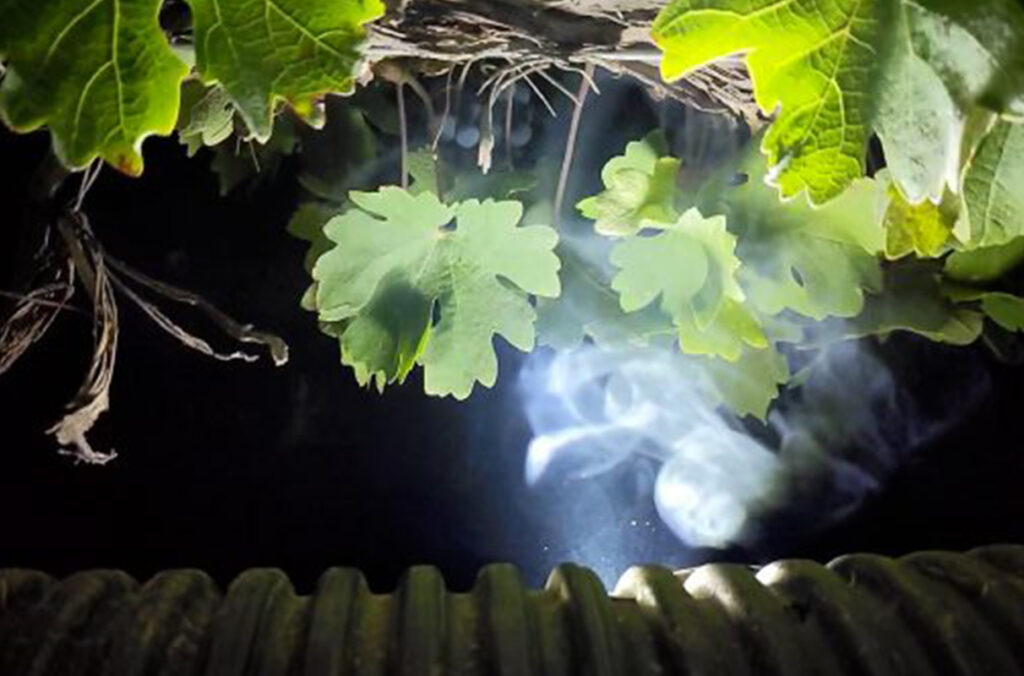A research team including Washington State University scientists has discovered a class of compounds that contribute to smoke impact in wine and grapes.
“It’s a great step forward in understanding how smoke exposure results in smoke-exposed perception—there’s been a missing link until now,” said Tom Collins, an assistant professor of grape and wine chemistry in WSU’s Department of Viticulture and Enology. “Ultimately, we expect that this work will demonstrate how these compounds interact to create the aromas and flavors we experience in smoke affected wines.”
Collins worked on the project with Elizabeth Tomasino, an associate professor at Oregon State University.
“The work done by Elizabeth’s team suggests that thiophenols act in synergy with phenols to create the smoky and ashy aromas associated with smoke exposure,” Collins said. “Our work suggests that the compounds are present in other forms in the wines as well, which needs further study to determine the impact of these other forms.”
Collins was helped on the project by graduate student Mackenzie Aragon.
“This is a critically important for winemakers who are increasingly dealing with the impact of wildfire smoke on their grapes,” Tomasino said. “It provides them markers that are much more predictive of smoke taint in wine than we previously had.”
The findings are not yet published, but Collins, Tomasino, and their graduate students discussed them during a presentation this week at the American Society for Enology and Viticulture national conference in San Diego.
For years, a class of compounds known as volatile phenols have been used as markers for smoke exposure in wine and grapes. However, they weren’t considered good predictors of smoke issues, Tomasino said. For example, wines with high levels of these compounds often didn’t taste smoke tainted and wines with low levels did taste smoke tainted.
This led Tomasino and her team to search for other compounds that were causing smoke impact in wine.
Earlier this year, Tomasino and Jenna Fryer, a doctoral student in Tomasino’s lab, published a paper that outlined a new standard for tasting the smoky/ashy component of smoke exposure. As part of that work, they discovered the new class of sulfur-containing compounds, thiophenols, that in subsequent analysis was found to cause smoke impact when in combination with volatile phenols.
Collins confirmed that these sulfur compounds were found in wines that had been exposed to smoke and not in samples that had no smoke exposure.
Additional work at OSU confirmed the structure of the compounds using Nuclear Magnetic Resonance, an instrument that allows the molecular structure of a material to be analyzed by observing and measuring the interaction of nuclear spins when placed in a powerful magnetic field.
Ongoing sensory analysis in Tomasino’s lab has shown that wines are described as smoke tainted when these sulfur compounds are in combination with the volatile phenols.
“This changes the game as these new compounds are a completely different class of compounds than we were previously studying,” Tomasino said. “Much of the smoke taint mitigation work to date has not been overly successful and now we know because we have been looking at the wrong thing. We should be much more successful over the next year or two in providing mitigation strategies for the industry that are actually effective.”
Wildfires are a significant threat to these industries because persistent exposure to smoke compromises the quality and value of wine grapes and adversely affects wines. That threat is particularly pronounced on the West Coast of the United States, where California, Oregon and Washington are three of the nation’s top four wine-producing states.
The research will continue due to a $7.65 million grant Oregon State researchers and a team of West Coast university collaborators received last year to study the impact of smoke exposure on grapes. Oregon State researchers are working with scientists at Washington State and the University of California, Davis, on the four-year project, which is funded by the U.S. Department of Agriculture’s National Institute of Food and Agriculture and through the USDA Agricultural Research Service.
The work aims to provide tools for the grape and wine industries to quickly make decisions about whether to harvest grapes or make wine following a smoke event.






